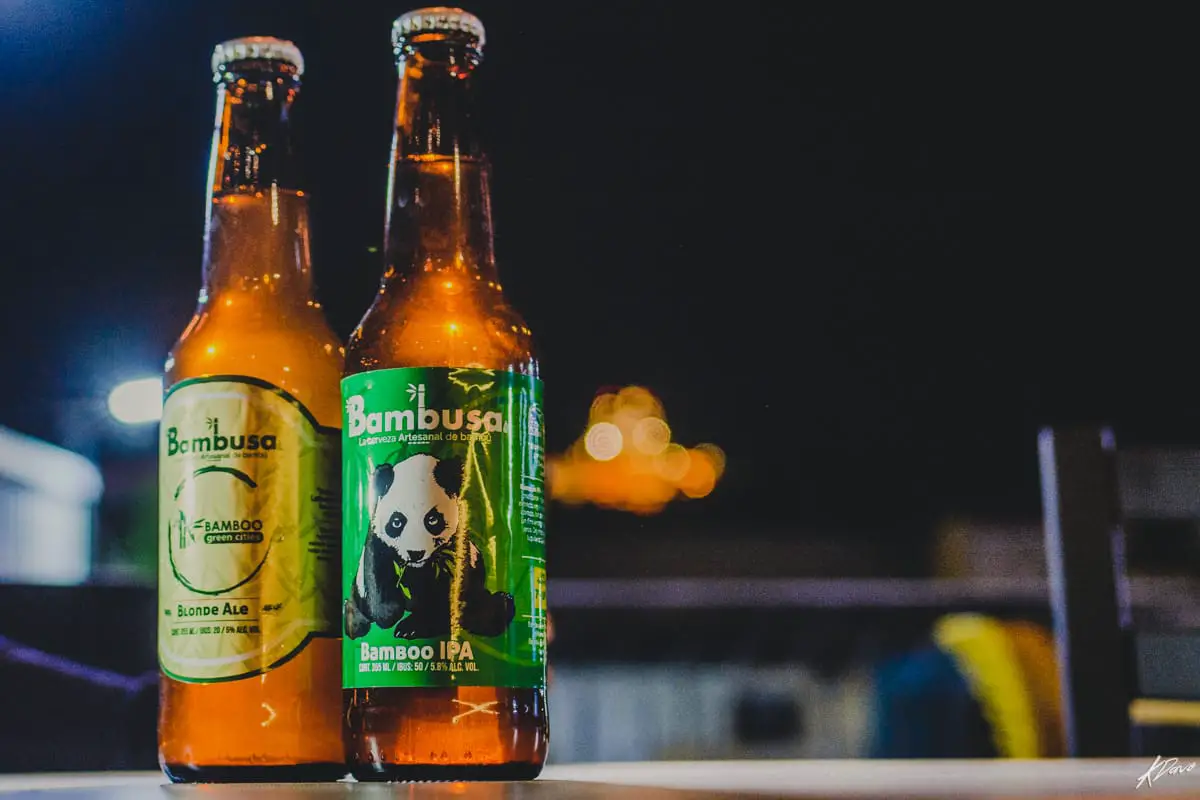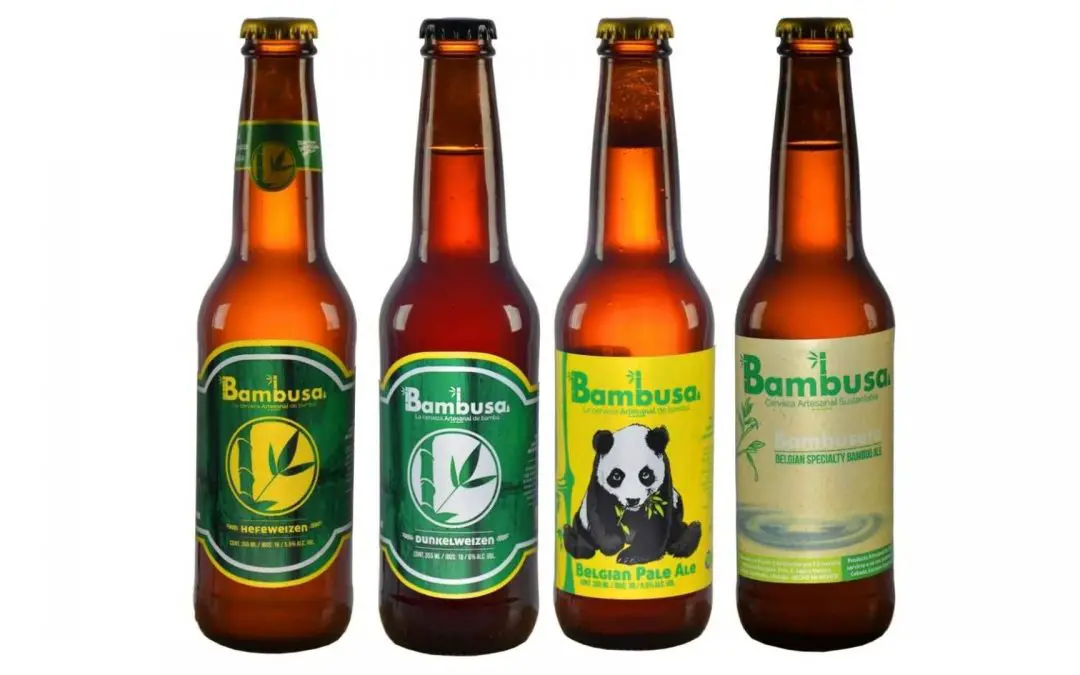By now, most people understand that bamboo is an incredibly useful plant. And visitors to this website probably recognize it as a natural phenomenon. Bamboo can be made into a living fence, a super hard floor, a super soft pair of underwear, a delightfully sumptuous set of sheets, a clean-burning ethanol fuel, and so much more. As an alternative to plastics and petroleum, bamboo’s ecological potential is enormous. But did you know you also turn this grass into bamboo beer?
Cerveza Bambusa, located in San Pedro Cholula, in Central Mexico, has been brewing bamboo beer for the last decade. Mauricio Mora Tello launched this enterprise in 2012, bringing together his longtime love of quality beer with a newfound passion for bamboo. Cerveza Bambusa adds bamboo leaves during the fermentation process to create a uniquely sustainable and delicious craft beer like no other. They offer a variety of flavors based on traditional, Old World recipes.
NOTE: This article first appeared in July 2021, last updated in December 2023.

Cerveza Bambusa
Mauricio Mora Tello always had a keen appreciation for great-tasting beer. But after attending the World Bamboo Congress in 2008, he also discovered a love for bamboo. As we already know, bamboo is a miraculous grass that grows faster than any woody plant on earth. Managed properly, bamboo can capture and store vast quantities of carbon, comparable to hardwood forests. And as a perennial grass, bamboo can be harvested without dying, meaning the carbon is not released and the crop does not require replanting.
Upon learning what we bamboo advocates have long known, Mauricio Mora’s pilsner-powered wheels began a-spinning. And soon this new concept was born. The first (and still the only, so far as we know) bamboo brewery in Latin America, Cerveza Bambusa is a one-of-a-kind marriage of Old World and New World traditions.
They don’t appear to have an active website, but you can follow Cerveza Bambusa on Facebook to see when they’ll be participating in public events.
From seed to suds
In 2011, Mauricio had the rare opportunity to visit China on a scholarship and study many of the ancient secrets surrounding this mystifying plant. And this was the first time he tasted a bamboo beer. Returning to Mexico, he promptly launched his bamboo plantation and in 2012 he embarked on his project of brewing bamboo beer.
With two modest plots of land, Mauricio now oversees about 10 hectares of bamboo, including Bambusa oldhamii, Dendrocalamus asper, Phyllostachys aurea, and Guadua angustifolia. Oldhamii is the chief ingredient for bamboo beer, while the other species are cultivated more for edible shoots or building materials. As bamboo cuisine grows in popularity, Mauricio has been experimenting with a variety of culinary preparations. His team is also exploring the possibility of developing bamboo cosmetic products, such as creams and shampoos. Bamboo’s high silica content makes it very beneficial for the skin.
Indeed, bamboo is famous for having hundreds if not thousands of uses and applications. But there’s something special about beer that gets people interested, even if bamboo hasn’t been on their radar. “Beer has been our pretext to talk about bamboo and position it in the minds of Mexican and Latin American consumers,” Mauricio says. “Something that cannot be missing in any gathering is a beer, it is a bridge that unites us, and it is the bridge that I decided to build around the use of bamboo.”

So Mauricio isn’t stopping there. Mezcal is another wildly popular beverage endemic to central Mexico, so it was only a matter of time before an innovative entrepreneur like Mauricio would introduce Bambuzcal, Mezcal macerated in bamboo leaves. Combining the intoxicating properties of Mezcal with the nourishing benefits of bamboo, the result is a smooth libation to be enjoyed on very special occasions.
What’s brewing?
Beer brewing’s origins trace back thousands of years, as far back as the ancient Egyptians and Sumerians. Bamboo meanwhile, though commonly thought of as an Asian plant, actually has deep roots in Mexico and Latin America. So bringing the two together in a bamboo-infused craft beer was something of a cultural coup and a dream come true for Mora Tello.
Today, Cerveza Bambusa offers a variety of intoxicating flavors, mostly based on German and Belgian recipes, like Hefeweizen and Belgian Pale Ale. If you’re in Mexico, you can find their beer in select restaurants and specialty liquor stores. Otherwise, you can look for their bamboo beer online.
In addition to incorporating the leaves of this unsurpassably sustainable grass in their beers, the bamboo brewery maintains a progressive attitude in all its business practices. They are committed to sourcing their bamboo leaves locally and creating jobs in the local area between Toluca and Mexico City. They also insist on the most ecological packaging for their products.

Brew the boo: Bamboo and alcohol
The idea of turning bamboo into alcohol is nothing brand new. In China and Japan, ancient craft brewers were probably fermenting bamboo wine and craft ales since the earliest dynasties. But, in that part of the world, brewing rice libations is actually a more common and fruitful process. Rice, like other commonly fermented grains, is higher in sugar, which is the key ingredient in the fermentation process.
Cerveza Bambusa does not replace wheat and barley with bamboo, but simply adds bamboo to the process to enhance the flavor and to raise awareness of the sensational resource.
The cellulose of bamboo can also be fermented into ethanol. The cellulose sugar is not so readily available as the simple sugars of grain, so the process is a bit more involved. The end result, however, is essentially the same product, which is ethanol, or ethyl alcohol. And this alcohol is suitable as both an intoxicant and a fuel source.
In East Africa, specifically Tanzania, they have an old tradition of brewing beer from the native bamboo species Oxytenanthera abyssinica. To produce this beverage, known as Ulanzi, they harvest young poles (not fresh shoots) of the solid-culm bamboo during the wet season, and then collect the sap or syrup that seeps from stems. This sugary extract is fermented to make a sweet and refreshing libation with about 5% alcohol.
Bamboo’s Latin American legacy
Mexico is home to dozens of native species of bamboo. Pre-Columbian societies like the Aztecs and Maya were well aware of bamboo and its widespread uses. The indigenous Mexicans used bamboo for basketry and shelter. But it’s unclear whether they ever brewed any alcoholic concoctions.
The most popular genera of ornamental bamboo in Mexico is Otatea, which includes Mexican Weeping Bamboo. This compact clumper has slender, arching culms with delicate, graceful foliage. It’s also relatively drought-tolerant, making it a popular choice in the Southwest.
Many varieties of Chusquea also grow throughout Mexico. This genus is widely distributed throughout Latin America, all the way to Southern Chile, and from sea level up to 10,000 feet and higher. Unusual for their solid (rather than hollow) culms, Chusquea bamboos are especially useful for crafts and light construction.
Other exotic bamboos from Mexico include the genus Rhipidocladum, with its unusual, fan-like leaf structure, and climbing (scandent) bamboo from the genus Arthrostylidium. In Southern Mexico, you can also find a few species of timber bamboo from the genus Guadua.
Check out our in-depth article on Bamboo in Latin America to read more about the many varieties of bamboo indigenous to South and Central America.
Onward with bamboo: ¡Adelante!
To learn more about bamboo, its rich history, and its multifarious uses, peruse our blog for fun facts and in-depth analysis.

























